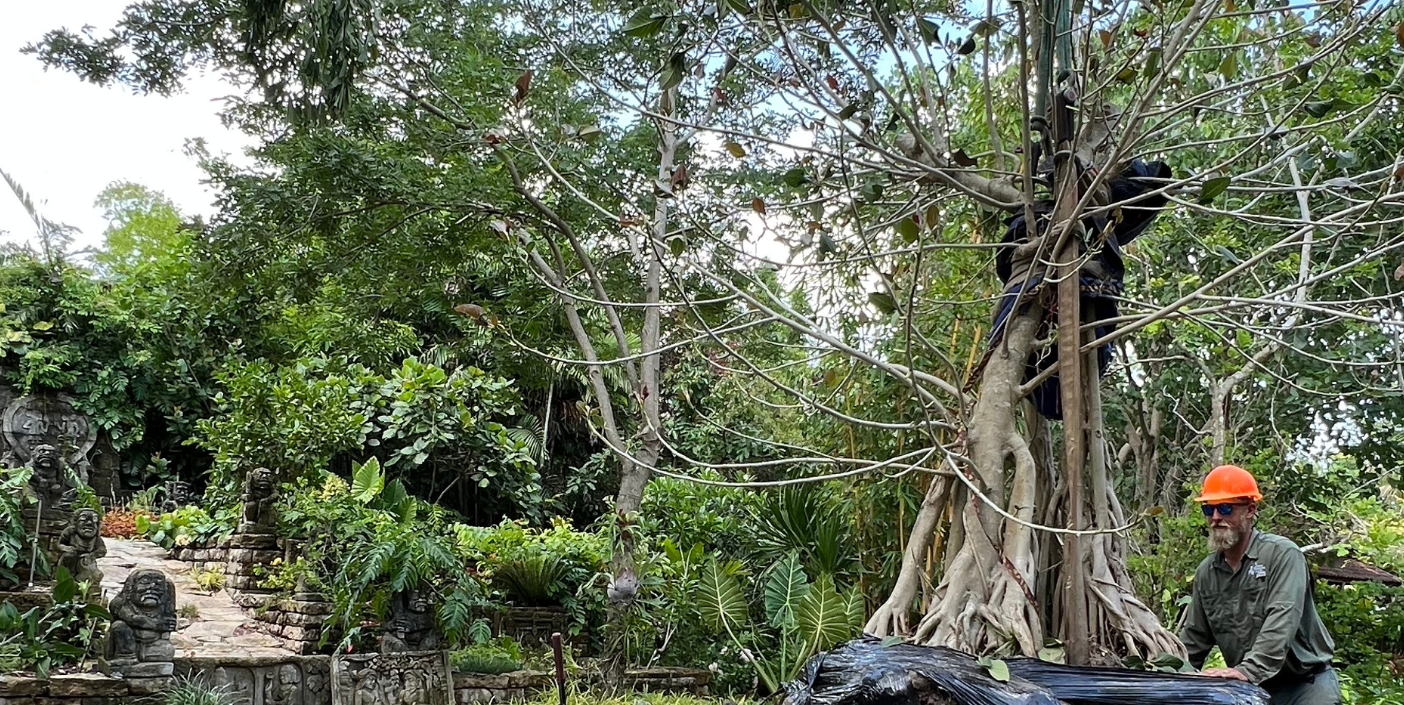
Talk about long-term planning. A few years ago, the Garden’s horticulture leaders laid out a vision for the Lea Asian Garden that will take more than a decade to fully achieve. They’ve been working on it behind the scenes, and this summer they took their work public, transforming an area by the Candi Sukuh temple ruin, an interpretation of a 15th-century Javanese temple.
The project involves Ficus trees, the removal of one species and the placement of another. Years ago, founding members of our staff planted a Ficus benjamina near the ruin. It was a perfectly fine tree, though due to miscommunication, it was not the type that the landscape architect, Made Wijaya, wanted. He had envisioned a Ficus benghalensis, growing in that spot.

Our team never forgot the late architect’s wish. They agreed a banyan would make a stunning focal point. Banyans are fascinating trees that produce aerial roots, which grow downward and implant themselves when they hit the ground. A single tree can feel like a forest; it practically begs for a game of hide-and-seek among the stilt-like roots that mature into trunk-like walls.
Three years ago, our horticulturists started growing a Ficus benghalensis var. krishnae, or Krishna’s buttercup, to be planted on the Compang, a representative of an Indonesian stone altar, where the Ficus benjamina stood. Then, expanding upon Wijaya’s vision, they took cuttings from the F. benghalensis to produce four more trees. They recently removed the F. benjamina, replaced it with the F. benghalensis, and planted its four offspring at the corners of intersecting pathways — like spokes with the mother tree at the center.
In time, these five Ficus trees will grow, interconnect, and create a fairy tale-like forest that guests will encounter as they approach the temple replica.
“It’ll really set the stage for the ruins,” says Brian Galligan, Vice President of Horticulture. “This summer, the trees will really take off. It’ll take 10 years to fully complete it, but within five years, you’ll see the concept. I think it’s going to be an amazing interactive experience.”
The banyan is just one example of the long-term planning that goes into garden design. Another? A cluster of Neobuchia paulinae trees in the western side of the Kapnick Caribbean Garden. This unusual species, native to Haiti, grows spikes along its trunks, like the popular silk floss trees. The trees have a neat adaptation — they swell to hold water during droughts. As the Neobuchia mature, our staff intends to place rocks among them, replicating an arid Caribbean environment.
“In order to make them look like they are in the habitat, we need to create the habitat, so they behave like they do in the wild,” Galligan says.
The Garden is forever changing with enhancements that have both immediate impact and those that will take shape in years to come. Visit often because you never know what’s coming next!
 About the Author
About the Author
Jennifer Reed is the Garden’s Editorial Director and a longtime Southwest Florida journalist.


